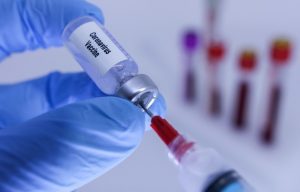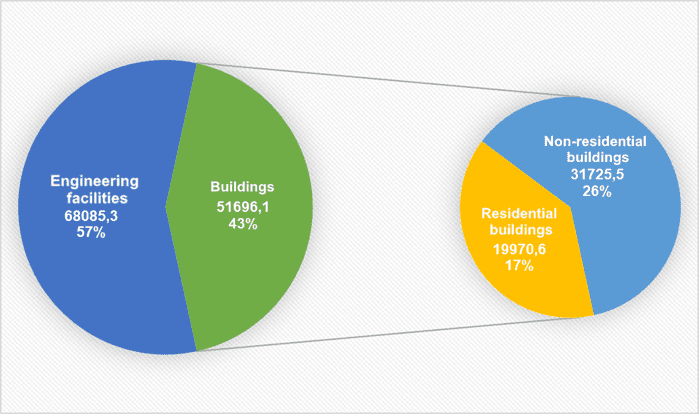
The Lithuanian company Snaige, the only manufacturer of household refrigerators and freezing equipment in the Baltic States, in January-September 2020 reduced its revenue in Ukraine by 16.3% compared to the same period in 2019, to EUR 4.504 million.
According to the published unaudited annual report of the company, Snaige’s loss in Ukraine during this period decreased by one third, amounting to EUR 2,000.
In general, the consolidated unaudited turnover of Snaige for January-September 2020 decreased by 14% compared to the nine months of last year, to EUR 22.3 million.
According to Snaige AB CEO Mindaugas Sologubas, quoted in the report, the decline in sales is a consequence of the global pandemic and quarantine.
“Due to the restrictions imposed by the quarantine, the company’s plant in Alytus was forced to work at partial capacity for several months in the spring, some employees were idle. There was a shortage of supplies, as many suppliers were located in the countries affected by the pandemic,” he said.
As noted, in the third quarter of this year, the company’s sales recovered and almost reached the level of the third quarter of last year, but this was not enough to cover the losses incurred in the spring.
At the same time, the company’s unaudited consolidated EBITDA more than doubled in three quarters, to EUR 1.7 million.

Ukraine is exploring the possibility of using financial instruments of the UK Export Finance (UKEF) to purchase British tests and vaccines to combat the coronavirus (COVID-19) pandemic, Foreign Minister Dmytro Kuleba said.
“We are currently discussing the implementation of a joint project for the development of the Ukrainian fleet and related infrastructure. We are also exploring the possibility of using UKEF financial instruments to purchase British tests and vaccines in the fight against coronavirus infection. Another area is the possibility of using these resources for the construction of Europe’s largest onshore wind farm in Zaporizhia region (Zofia project),” the minister told Interfax-Ukraine, answering a question about the interest of Ukrainian-British projects in cooperation with UKEF.
Kuleba said that within the framework of the memorandum of cooperation between UK Export Finance and the Cabinet of Ministers signed on October 8, 2020, five priority areas have been identified: security and defense, infrastructure, agriculture, energy and healthcare. However, he said, collaboration is not limited to these industries.
“On December 10, representatives of the agency will hold a presentation of the available financing instruments and opportunities for cooperation with Ukrainian partners in the framework of the Ukrainian Investment Roadshow,” Kuleba said.
As Ambassador Extraordinary and Plenipotentiary of Ukraine to the United Kingdom of Great Britain Vadym Prystaiko said during an online briefing for Ukrainian exporters “Bilateral Trade between Ukraine and Great Britain after Brexit”, the mechanism of the UK Export will allow access to concessional lending at 2.5-4%.
“This is a GBP 2.5 billion loan agreement that allows access to concessional lending at 2.5-4% depending on the terms of the contract,” Prystaiko said at an online briefing organized by the Ukrainian Embassy in the United Kingdom of Great Britain and Northern Ireland and the Council of Exporters and Investors under the Ministry of Foreign Affairs of Ukraine. At the same time, the share of the British partner in such projects should be 20%, Prystaiko said.
He also said that although we are talking about imports, Ukrainian exporters will thus be able to obtain certain services, technologies or raw materials.

The Cabinet of Ministers of Ukraine exempted imported vaccines from coronavirus disease from VAT.
The corresponding government decree, adopted at a meeting on Wednesday, includes a number of antibiotics and vaccines for the prevention of coronavirus disease (COVID-19) in the lists of drugs that are exempt from VAT, approved by Resolutions No. 224 and No. 225.
As Prime Minister Denys Shmyhal said at a government meeting, this decision will reduce the cost of imported vaccines for the prevention of COVID-19.

The mobile operator Kyivstar has launched a service for subscribers to receive legal advice by phone or on the website – Lawyer Online.
According to the press service of the company, users of the service are offered legal advice on issues in family, inheritance, tax law, not related to doing business, in matters related to the ownership and use of a car, real estate, utilities. Documents that a lawyer helps to prepare are statements, contracts, claims, letters of attorney and others.
It is noted that the service has two subscription options – Lawyer Online Classic and Lawyer Online Unlimited.
Lawyer Online Classic provides for consultation on three issues and preparation of three transactions. The subscription price is UAH 30 per month. Lawyer Online Unlimited is an unlimited number of consultations and preparation of up to ten legal documents, the cost is UAH 50 per month.
The subscription cost is debited from the subscriber’s mobile account.
“Kyivstar is the first among mobile operators in Ukraine to offer its subscribers legal services remotely in situations that each of us may face in everyday life. Today, when communication, work, study go online, it is important for Kyivstar to provide its clients with a convenient way to receive the services necessary for a comfortable life. So, we have already launched applications for medical consultations – Doctor Online – and an application with workouts for home and gym – Fitstar,” Marketing Director of Kyivstar Pavlo Daniman said.
The service partner is Legal and Tax Advisers LLC, which provides advice in the field of law, taxation, audit and others.
Volume of construction products produced by type in Jan-Sept of 2020 (MLN uah).

SSC of Ukraine

Accrued insurance premiums under Green Card international insurance contracts concluded by the member companies of the Motor (Transport) Insurance Bureau of Ukraine (MTIBU) in January-October 2020 decreased by 29.82% compared to the same period in 2019, to UAH 1.007 billion.
As the MTIBU reported on the website, the number of Green Card agreements concluded during this period fell by 44.99%, to 511,528.
At the same time, the amount of compensations paid on claims increased by 14.79%, to EUR14.3 million, while the number of claims paid by 6.61%, to 5,049.
The MTIBU is the only association of insurers that provide compulsory insurance of civil liability of land vehicle owners for damage caused to third parties.